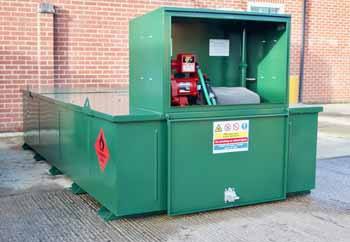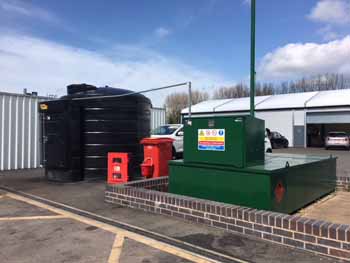Can we store petrol at our golf club?
Related Articles
The short answer is yes and, below, is the longer answer, which details what regulations golf clubs need to follow to ensure they are not breaking the law when it comes to petrol storage
There is a common misconception that petrol is not allowed to be stored above ground.
Petrol can be stored in a suitable above-ground tank, which allows for delivery of petrol direct to site by tanker. This eliminates safety and legal issues arising from staff collecting petrol themselves from filling stations.
The Petroleum (Consolidation) Regulations 2014 (PCR) came into effect on October 1, 2014 and apply to:
- All workplaces that store petrol where that petrol is dispensed directly into the tank of a vehicle with an internal combustion engine and non-workplace premises storing petrol, for example at private homes or clubs and associations.
The regulations are enforced by Petroleum Enforcement authorities (PEAs), which were formerly Petroleum Licensing Authorities (PLAs). They also continue to enforce Dangerous Substances and Explosive Atmospheres Regulations (DSEAR) at workplaces covered by PCR.
There are a multitude of regulations with regard to the storage of petrol on premises and most are written to accommodate forecourt petrol stations.
In some ways, all premises storing petrol are considered as petrol stations but the guidelines written for PEA’s do allow for petrol stored in small movable tanks. (Blue Book Guidelines Annex 8.2)

The Petrol Tank Company has developed a range of small above-ground petrol tanks and even smaller mobile petrol containers that are suited to the requirements of the likes of golf clubs, marinas, car dealerships and all users of petrol in the workplace.
The petrol tanks range from 1,250 litres to 2,950 litres and exceed all current and predicted legislation as laid down in HSG176 (The Storage of Flammable Liquids in Tanks). They are designed for ease of use, ease of installation and ease of upgrading.
The ‘caddies’ (transportable containers) range from 60 litres to 330 litres and meet all current and predicted legislation as laid down in HSG51 (The Storage of Flammable Liquids in Containers) and are designed to be carried to a petrol filling station in the back of a vehicle or in a dedicated trailer.
The storage and use of petrol by the groundcare profession has long been an issue, with people often unsure of, and unwittingly breaking, the law.
It doesn’t help that some filling stations choose to interpret the law in a rather rigid fashion and to treat all customers as Joe Public. Most filling stations have yet to revise the regulation change with regard to containers and size of containers and will still say that only 10 litres can be filled in 2 x 5L plastic cans. The law now states that 20L can be carried by private individuals, in 5L and 10L plastic or 20L steel cans.
If you are using petrol at work in any reasonable quantity, then it is safer to have the petrol delivered to your site than to regularly collect that petrol by road in a vehicle.
The basic considerations for storage of petrol in a small above ground petrol tank at your workplace are:
- Tanker access – Tankers need to have a clear access into your premises.
- Tanker safety – The petrol tanker must be able to drive away (without reversing) in the event of an emergency.
- Tank security – Petrol tanks need to be in a reasonably secure and safe location.
- Tank positioning – The petrol tank should be on a concrete base (outside) and level with the ground.
- Tank size – The tank should be of a size that allows not too frequent or too long a delivery interval.
- Zoning – The tank should be if possible 4m away from buildings, doors, windows and electrical terminations.
- Safety – Personnel should be trained in safe use and accepting deliveries and the tank inspected annually.
Everything to do with the storage of petrol in tanks and containers is covered by considerations for safety and where there is any conflict in interpretation then DSEAR will override everything.

The requirements of petroleum enforcement authorities will vary from region to region. PEAs are a part of Trading Standards departments at county or city level.
As a guideline, petroleum enforcement authorities will require a plan of where the tank will be placed, a risk assessment for the tank and its use, a plan of how the tanker will enter and exit, a plan to deal with spills from the tanker during delivery and a signed application for a petroleum certificate.
The Petrol Tank Company keeps a full record of all tanks and will inspect tanks on an annual basis. They can also assist with all aspects of tank installation including risk assessments and liaising with petroleum enforcement, to make the process as simple as possible.
For more information, visit www.thepetroltankcompany.co.uk

























